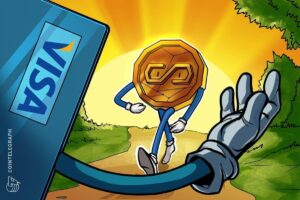Web3’s Reliance on Web2 for Survival: An Analytical Look

In the constantly evolving technology landscape, Web3 is often presented as the decentralized successor to the internet, promising empowerment through blockchain technology. However, reality reveals a significant reliance on the traditional Web2 infrastructure for its survival and flourishing. This symbiotic relationship, although not always acknowledged, is crucial for understanding the current and future trajectory of Web3. Web2 companies, having established the infrastructure for many years, serve as essential building blocks for Web3. Web3 applications often utilize Web2 services such as cloud computing, content delivery networks (CDNs), and front-end development frameworks. This dependence is pragmatic. The existing infrastructure of Web2 allows Web3 to focus on developing decentralized applications while delegating fundamental technical complexities to Web2 providers. Without these services, Web3 might face significant challenges in scaling and maintaining performance. Furthermore, Web3 applications are frequently built using programming languages and development tools that were developed and are maintained by Web2 companies. For instance, Javascript, a primary language for web development, is extensively used in both Web2 and Web3 environments. Additionally, services like Github, owned by Microsoft, provide a centralized platform for code collaboration and version control, facilitating the development of Web3 projects. Web3 also relies heavily on Web2 social media platforms for information dissemination and user acquisition. Although Web3 promises to create decentralized social media platforms, many Web3 projects still rely on Twitter, Facebook, and Instagram to reach a wider audience. These platforms are used not only for advertising but also for building communities and important product announcements. The combination of Web3’s decentralized capabilities and Web2’s broad reach allows projects to enter the market more efficiently. However, this reliance comes with its downsides. The central dependency on Web2 infrastructure raises concerns about censorship and control. Web2 platforms can limit the visibility of Web3 content or even ban it, impacting growth and distribution. Moreover, using Web2 solutions for identity verification and data management undermines the fundamental decentralized ideals of Web3. Thus, it becomes essential to find a balance between leveraging Web2’s existing resources and developing decentralized alternatives that can support Web3 values. The future of Web3 involves two distinct paths: gradual integration and independent decentralized development. Gradual integration involves continuing to use Web2 services while exploring incremental decentralized solutions. This might involve creating decentralized platforms for content delivery networks or developing decentralized development tools. At the same time, independent decentralized development will focus on building an entirely new infrastructure that is completely Web3-native. This approach requires significant innovation and investment, but it could lead to a truly resilient Web3 ecosystem. In conclusion, Web3’s relationship with Web2 is complex. While Web3 strives for decentralization, it currently relies on the existing infrastructure of Web2. Understanding this relationship is crucial for the future growth and evolution of Web3. As Web3 continues to mature, it must balance the pragmatic advantages of Web2 with its commitment to decentralization to create a more equitable and resilient internet.




